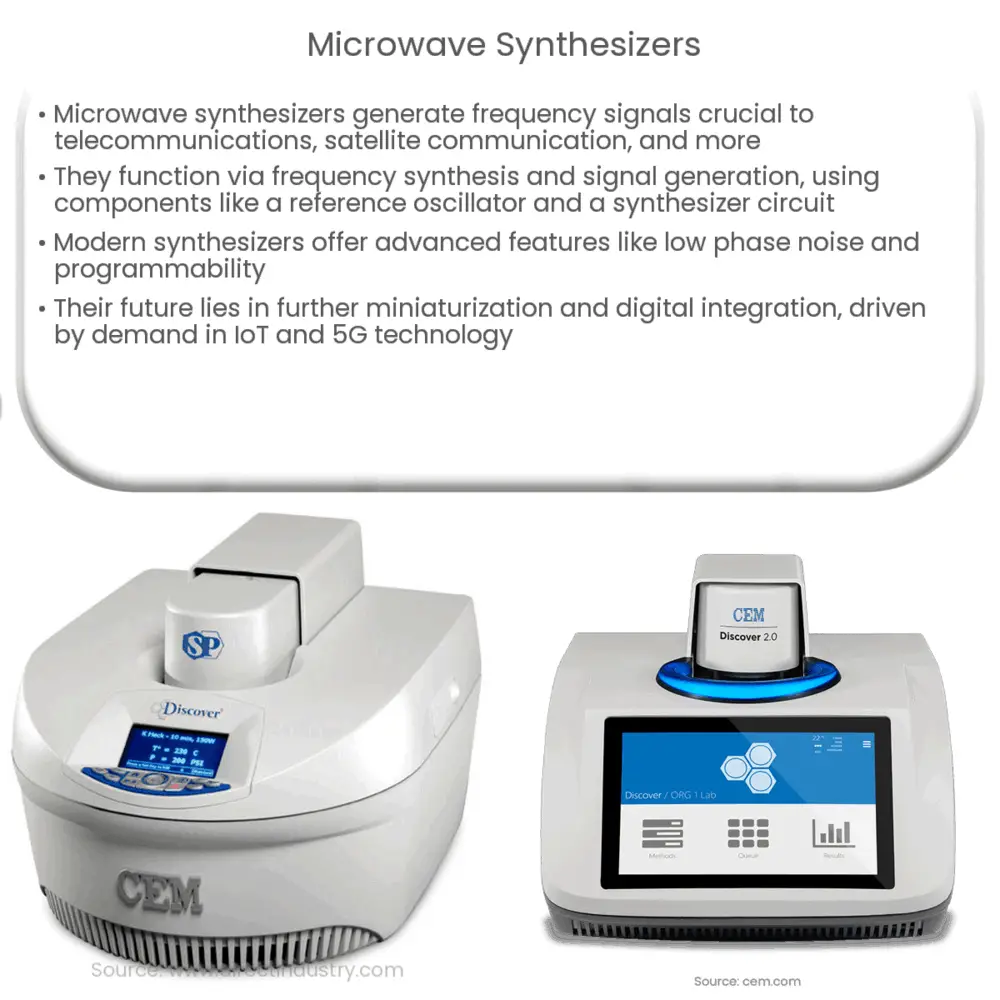Explore the basics, advanced features, and applications of microwave synthesizers. Understand their future in wireless and quantum technology.

Microwave Synthesizers: Understanding the Technology
A microwave synthesizer, as its name suggests, is a highly specialized instrument used to generate microwave frequency signals. It is a crucial tool in a wide array of technological applications, ranging from telecommunications and satellite communication to scientific research, radar, and even quantum computing.
Basics of Microwave Synthesizers
A microwave synthesizer generates microwave frequencies, typically in the range of 300 MHz (Megahertz) to 300 GHz (Gigahertz), although this can vary depending on the specific instrument and its design. The key to understanding how microwave synthesizers work lies in their basic operating principles and core components.
Operating Principles
- Frequency Synthesis: The fundamental operation of a microwave synthesizer is frequency synthesis, the process of generating a set of discrete frequency outputs from a single, fixed frequency reference. This is typically accomplished using techniques like phase-locked loops (PLLs), direct digital synthesis (DDS), or a combination of both.
- Signal Generation: Once the desired frequency is synthesized, the signal is then generated and amplified. This involves modulating the frequency as per the requirement of the specific application. Some common types of modulation include amplitude modulation (AM), frequency modulation (FM), phase modulation (PM), and pulse modulation.
Core Components
- Reference Oscillator: This is the component that provides the fixed frequency reference for the synthesis process. It is critical for the oscillator to be stable, as any drift in its frequency can adversely impact the synthesizer’s performance.
- Synthesizer Circuit: The synthesizer circuit is where the frequency synthesis happens. Depending on the specific design and technology, this can be a PLL, a DDS circuit, or a hybrid of the two.
- Modulator: The modulator manipulates the synthesized frequency according to the desired output. Depending on the specific application, this could involve AM, FM, PM, or pulse modulation.
- Amplifier: Finally, the amplifier boosts the signal to the required power level, allowing it to be transmitted or used in the relevant application.
These components and principles represent the fundamental building blocks of microwave synthesizers. However, the complexity of these devices goes far beyond these basics. In the next section, we will delve deeper into the advanced features and modern applications of microwave synthesizers.
Advanced Features and Modern Applications
Modern microwave synthesizers have seen considerable advancements over the years, with many offering a range of features that enhance their performance and functionality. For instance, some synthesizers now provide low phase noise, high spectral purity, and fast switching speeds. Furthermore, there’s a growing trend towards developing software-defined synthesizers, allowing users to programmatically control the synthesizer’s behavior.
Applications
- Telecommunications: Microwave synthesizers are essential in wireless communication infrastructure, playing a key role in frequency hopping, signal testing, and modulation.
- Satellite Communication: Satellite communication systems utilize microwave synthesizers for downlink and uplink signal processing, frequency conversion, and signal generation.
- Radar Systems: Microwave synthesizers are used in radar systems to generate and modulate the transmitted signal, as well as to process the return signal.
- Scientific Research: In scientific research, microwave synthesizers are used in a variety of applications, including nuclear magnetic resonance (NMR) spectroscopy, quantum computing, and particle acceleration.
Future Perspectives
The future of microwave synthesizers lies in further miniaturization and increased integration with digital technology. Chip-scale microwave synthesizers and the incorporation of more advanced digital control methods are trends that promise to improve performance and reduce size. Moreover, as the world continues to embrace the Internet of Things (IoT) and 5G technology, the demand for more advanced microwave synthesizers is expected to rise significantly.
Conclusion
In conclusion, microwave synthesizers are critical to the functioning of a multitude of technologies we use today. They serve as the backbone for a wide range of applications from telecommunications to scientific research, with their roles becoming increasingly vital as we delve deeper into the era of wireless technology and quantum computing. Understanding their operation, functionality, and applications can give us a clear insight into the integral role they play in our technologically-driven world. The future of microwave synthesizers holds exciting prospects, with the promise of continued advancements and innovations in the field.

